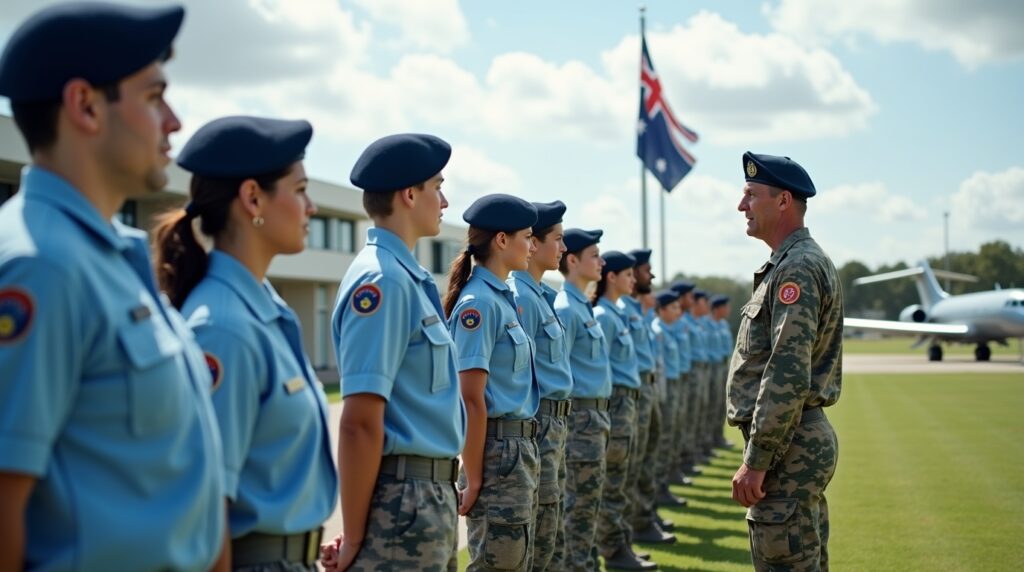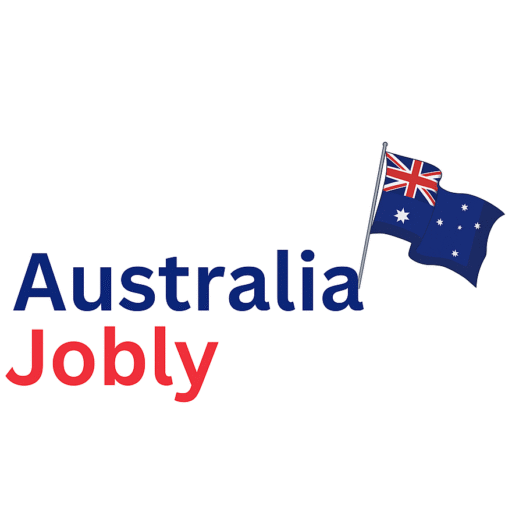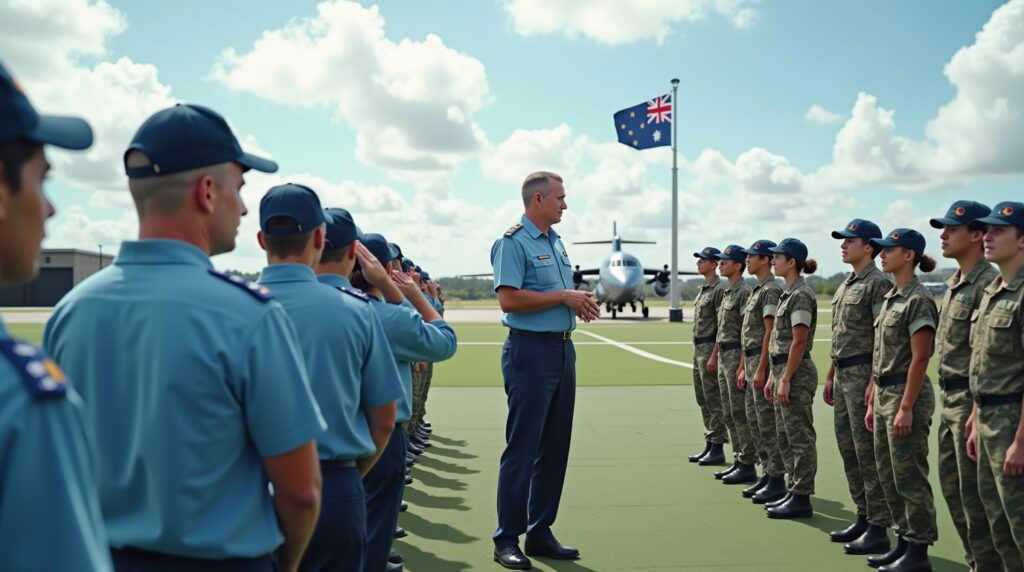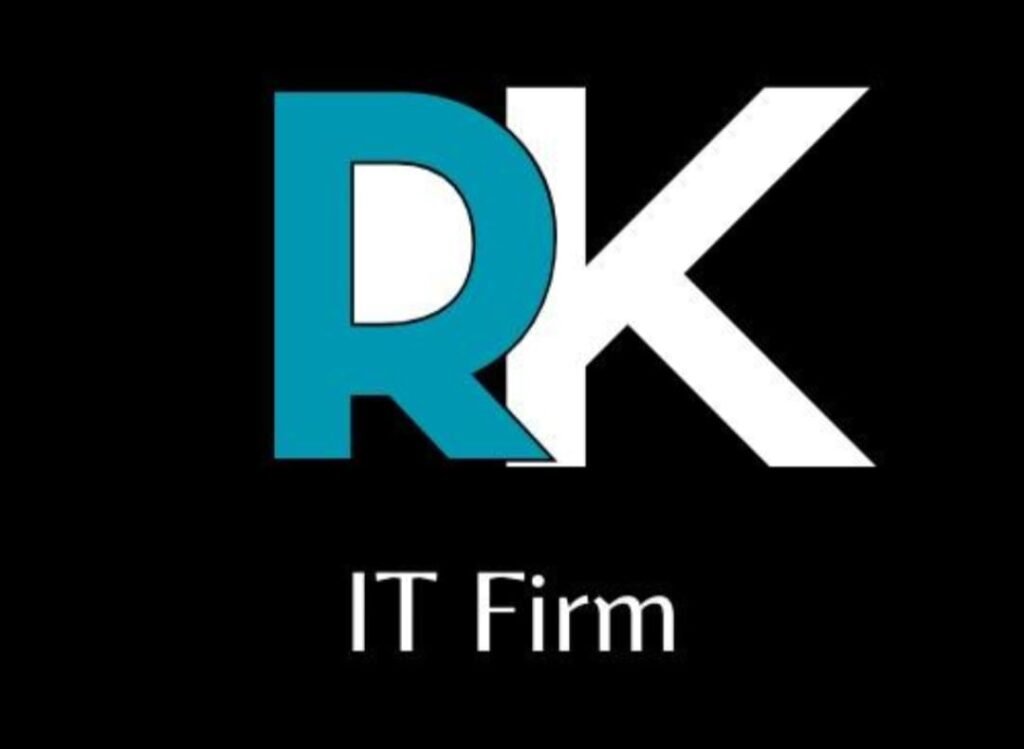Joining the Royal Australian Air Force (RAAF) is a goal many Australians aspire to. Whether you’re finishing school, switching careers, or exploring opportunities in national service, understanding how to join Air Force Australia is essential for informed decision-making. The process involves more than just applying – it requires planning, training, qualifications, and a clear understanding of roles, responsibilities, and lifestyle.
The RAAF plays a vital role in national defence, humanitarian missions, surveillance, and peacekeeping. For those wondering how to join Air Force Australia, this guide offers a full breakdown of training paths, officer programs, eligibility, and specialised career roles. It includes step-by-step directions, preparation tips, and recruitment insights based on current RAAF practices and future workforce needs.
Overview Table: Air Force Entry Snapshot
| Entry Point | Key Details |
| Minimum Age | 17 years for most positions |
| Citizenship Requirements | Australian citizens preferred, permanent residents eligible for limited roles |
| Education Requirements | Year 12 with passes in English, Mathematics, and other broad subjects |
| Fitness Standard | Must pass the Pre-Enlistment Fitness Assessment (push-ups, sit-ups, beep test) |
| Entry Types | Officer Entry, General Entry, Reserve, Gap Year, Specialist and Graduate Pathways |
| Training Base | Officer Training School East Sale, VIC |
| Preparation Course | CGEA 22473VIC – Boosts literacy and numeracy for ADF readiness |
Step-by-Step Guide on How to Join Air Force Australia
Understanding how to join Air Force Australia means becoming familiar with a clearly defined recruitment process. This includes aptitude testing, interviews, physical evaluations, and structured officer or general entry training.
Step 1: Meet the Core Entry Requirements
The first part of joining the Australian Air Force is meeting eligibility criteria, which includes:
- Age: At least 17 years old at the time of entry.
- Citizenship: You must be an Australian citizen. Permanent residents can apply for select roles.
- Education: Year 12 completion, with passes in core subjects such as English and Mathematics.
Certain streams allow air force entry without a degree, such as General Entry or Reserve programs, while Officer Cadet and Air Force pilot career paths require higher qualifications and screening.
Step 2: Start with the YOU Session Preparation
One of the first major steps in the air force recruitment process is the Your Opportunities Unlimited (YOU) Session.
This session involves:
- An aptitude test covering literacy, numeracy, and logic reasoning
- A psychological interview assessing mental fitness and motivation
- A basic medical check to ensure minimum health compliance
To excel in this stage, many applicants undertake the CGEA 22473VIC course, which is a literacy and numeracy enhancement program focused on ADF job readiness.
This is also where candidates will be advised on suitable roles based on performance, eligibility, and personal interest. If your goal is how to join Air Force Australia as an officer or pilot, this session is the gateway.
Step 3: Prepare for the Pre-Enlistment Fitness Assessment
The defence force fitness test is mandatory. This pre-enlistment fitness assessment includes:
- Push-ups (based on gender and role)
- Sit-ups
- Shuttle run (beep test) – Measures cardiovascular endurance
Training should begin months before the assessment. You can find resources via Defence Recruiting or consult certified fitness trainers with military fitness experience. These exercises are essential, especially for applicants eyeing australian air force jobs in technical, aviation, or ground support roles.

Step 4: Understand the Air Force Entry Pathways
There are multiple air force entry pathways, depending on your qualifications and career goals:
1. General Entry
For those who have completed high school and are looking for technical or support roles. Suitable for many non-officer Australian air force jobs.
2. Officer Entry
For leadership roles. These require successful completion of Initial Officer Course at Officer Training School East Sale.
3. Graduate Entry
Designed for professionals (engineering, IT, law, etc.) who wish to become an air force officer Australia after completing tertiary qualifications.
4. Australian Defence Force Academy (ADFA)
A competitive academic + military training program. Suitable for school leavers wanting to pursue a career in air force Australia while completing a university degree.
5. Reserve
Part-time RAAF officer entry or enlisted roles for skilled professionals not seeking full-time military careers.
6. Gap Year Program
Open to recent school leavers. Provides a one-year australian air force job placement to experience military life before committing to a long-term path.
Step 5: Begin Officer or Specialist Employment Training
Upon clearing entry requirements, successful candidates undergo formal air force training Australia, including:
- Initial Military Training – Focused on discipline, protocol, and defence basics
- Initial Officer Course – 17-week program at RAAF Base East Sale
- Specialist Employment Training – Tailored technical and leadership training aligned with job stream
Military officer training programs include both classroom and field components such as:
- Field leadership tasks
- Military communication training
- Resilience and adaptability drills
Each stream also includes career advancement in ADF through leadership modules and assessment phases.
Key Roles Available in Australian Air Force Jobs
There is a wide array of roles in the RAAF that appeal to different interests and educational backgrounds. As you explore how to join Air Force Australia, it’s essential to know your options.
Aviation and Aircrew
- Fighter Pilot
- Loadmaster
- Air Combat Officer
Technical and Engineering
- Avionics Technician
- Aerospace Engineer
- Aircraft Structural Fitter
Intelligence and Cybersecurity
- Signals Intelligence Analyst
- Cyber Warfare Specialist
Health and Medical
- Nursing Officer
- Medical Technician
- Dental Officer
Ground Support and Logistics
- Airfield Defence Guard
- Warehouse Coordinator
- Transportation Officer
Each role has unique requirements and training schedules. For instance, an australian air force pilot career demands an extra layer of physical testing, aptitude screening, and aviation screening program clearance.
Air Force Officer Qualifications and Leadership Expectations
Pursuing how to join Air Force Australia as an officer requires strong academic, leadership, and interpersonal qualities. Key officer traits include:
- High performance in aptitude test air force
- Ability to lead teams under pressure
- Willingness to relocate
- Strong verbal and written communication
Leadership is further cultivated during air force leadership training, where recruits learn decision-making, conflict resolution, and mission planning. Officers also receive training in policy-making and team management at Officer Training School East Sale.
The officer selection board air force ultimately determines who is suitable for high-level leadership roles within the Australian Air Force.
Life After Selection: Training, Base Life, and Career Advancement in the RAAF
Once you’re accepted into the Royal Australian Air Force, the experience of military life truly begins. Understanding the structure of air force training Australia, lifestyle expectations, and career development options is essential for long-term success–especially for those committed to learning how to join Air Force Australia and thrive in service.
This section explains what happens after recruitment, the structure of base life, career growth possibilities, and the realities of day-to-day operations in different officer and enlisted roles.
The Structure of Air Force Officer Training in Australia
All selected officer candidates must complete the Initial Officer Course (IOC) at Officer Training School East Sale, which spans approximately 17 weeks. It is a foundational part of every air force officer Australia journey and is where personal transformation begins.
What Officer Training Involves
- Professional knowledge modules – Military structure, chain of command, strategic doctrine
- Military leadership development – Tactical simulations, command exercises
- Field exercises – Live, mission-based drills focused on strategy and execution
- Military discipline and commitment – Strict schedules, conduct rules, respect for hierarchy
- Communication and teamwork – Verbal and written command training, group tasks
Training also includes field leadership tasks, designed to cultivate decision-making under pressure. Candidates learn to handle real-time planning in uncertain environments. These tasks are critical for those planning to enter technical and leadership roles air force wide.
For pilots, the aviation screening program adds another layer of physical and cognitive assessment before beginning flight-specific training.

Air Force Base Life and Support Facilities
Understanding life at air force base Australia helps candidates prepare mentally for relocation and military routine. RAAF bases operate like self-contained towns. Typical base features include:
- On-site accommodation (shared or private, depending on rank)
- Medical and dental clinics
- Education facilities for continued training
- Sports facilities, gyms, and recreational zones
- Chaplain services and mental health support
Personnel also enjoy work-life stability through air force lifestyle and benefits programs. Flexible duty rotations, leave policies, and base amenities ensure members can balance work with personal well-being.
Members entering via air force entry programs for students, such as ADFA or the Gap Year, are introduced gently into full-time military culture, easing their transition.
Roles That Require Additional Training and Commitment
Some australian air force jobs require longer or highly specialised training. Here are a few examples:
| Role | Additional Training |
| Fighter Pilot | 2–4 years of flight and weapons systems training |
| Cyber Warfare Specialist | Advanced systems and security clearance programs |
| Nursing or Medical Officer | Healthcare certifications, deployment readiness programs |
| Avionics Technician | Engineering certifications and platform-specific courses |
Each of these requires not only educational qualifications but a commitment to military values and a willingness to continually upskill through specialist employment training.
Career Progression in Australian Air Force
A major reason people ask how to join Air Force Australia is for the long-term growth potential. Career advancement is transparent, merit-based, and supported through formal education and experience-building pathways.
Key Aspects of Career Growth
- Rank Promotions – Based on service years, performance, and evaluations
- Leadership Training – Advanced officer leadership schools
- Tertiary Education Sponsorships – Includes the Defence University Sponsorship program
- International Training – Exchange opportunities with allied air forces
Military career guidance is offered throughout service, helping individuals map progression from entry-level roles to higher command positions. RAAF personnel also benefit from structured military officer training that prepares them for broader ADF roles or transition to civilian leadership after service.
Those in officer aviation pathways have a particularly structured career map with defined levels, such as Flight Commander, Squadron Leader, and Wing Commander.
Pay Scales and Financial Benefits in the Air Force
Understanding compensation is a critical part of learning how to join Air Force Australia. The salary structure is based on rank, role, and duration of service, but even entry-level roles offer competitive pay and a wide range of allowances.
Typical Earnings
| Role Type | Average Salary Range (AUD) |
| General Entry (Non-officer) | $55,000 – $75,000 annually |
| Air Force Officer Salary Australia | $80,000 – $110,000 annually (plus allowances) |
| Specialist Medical/Engineering | $100,000 – $140,000 annually |
Additional Allowances and Perks
- Military service pay and allowances
- Housing and relocation assistance
- Free dental and healthcare for members and family
- Superannuation and retirement savings contributions
- Travel and deployment bonuses
- Air force housing and relocation support
Moreover, members may access generous air force career benefits such as:
- Funded further education
- Free fitness and wellness facilities
- Annual leave plus emergency and compassionate leave
- Discounts on home loans and rent
These offerings are part of why RAAF personnel often enjoy high retention and job satisfaction levels.
Health, Fitness, and Psychological Requirements
A strong emphasis on fitness and mental readiness exists across all air force training school programs. Beyond the pre-entry fitness assessment, ongoing evaluations include:
- Air force medical examination
- Cardiovascular endurance benchmarks
- Strength and mobility evaluations
- Psychological screening and stress tests
Long-term performance depends on continuous adherence to air force fitness requirements, especially for combat and aviation personnel. This includes periodic shuttle run beep test, weight standards, and injury recovery monitoring.
Air Force Application Timeline and Process
The air force application process timeline can take 6–12 months depending on the role and entry point. Here’s a rough overview:
- Online application submission
- YOU Session + aptitude test
- Assessment day (interview + medical)
- Officer Selection Board (if applicable)
- Pre-enlistment fitness assessment
- Official offer and entry training dates
Women, permanent residents (for select roles), and non-degree holders are all eligible depending on conditions. Those interested in air force eligibility for women will find inclusive pathways and leadership support tailored to equal opportunity progression.
Joining the Australian Air Force Is a Competitive Yet Achievable Process
Many aspiring candidates want to know whether it’s hard to enter the Royal Australian Air Force. The answer depends on your preparation, fitness, and commitment. The air force recruitment process is thorough and selective, requiring strong performance across aptitude tests, physical assessments, and interviews.
However, preparation support is widely available through the CGEA 22473VIC course, online ADF preparation courses, and resources offered by the Australian Defence Force Academy. With structured guidance and dedication, candidates of various backgrounds– including those without degrees – can succeed.
The Australian Air Force Has Pathways for Foreign Nationals in Specific Cases
If you’re wondering about air force eligibility for foreigners, the general rule is that applicants must be Australian citizens. However, some exceptions exist for permanent residents with unique skills or roles that are hard to fill domestically.
The Defence Force periodically opens air force job vacancies 2025 for foreign-trained engineers, health professionals, or technicians – subject to clearance, residency status, and strategic demand. All other recruitment steps remain the same.
Salary Expectations for Air Force Officers in Australia Are Competitive
When evaluating how much the Australian Air Force pays, it’s essential to look beyond base salaries. An air force officer salary Australia typically includes:
- Annual salary: $80,000 to $110,000 depending on rank
- Housing or rent assistance
- Military service pay and allowances
- Hazard pay or operational deployment bonuses
- Paid travel, relocation assistance, and pension contributions
Specialist roles (e.g., medical, engineering, or pilot pathways) can exceed $140,000 per year. These benefits ensure that joining the RAAF is financially rewarding as well as professionally fulfilling.
Qualifications Required to Join the Air Force Include Education, Fitness, and Background
To meet the air force education requirements, candidates generally need:
- Year 12 certificate (English, Maths, 3 other subjects)
- Sound numeracy and literacy skills (often supported through CGEA 22473VIC)
- Background clearance (10-year checkable history)
- Medical and psychological health
There are flexible entry options for those with or without a university degree. The air force entry pathways include:
- Direct Entry (with/without degree)
- Sponsored Undergraduate (via Defence University Sponsorship)
- Graduate Medical Program
- ADFA Entry for student officers
- Reserve (part-time)
These pathways are explained during the YOU Session preparation phase, where candidates also explore matching roles.
Final Thoughts
The journey to the Royal Australian Air Force is both personal and professional. Whether you’re a recent school leaver, a university student, or someone transitioning careers, the path to how to join Air Force Australia is accessible if approached with planning, discipline, and awareness of expectations.
This profession demands resilience, leadership, and adaptability–but rewards its members with national pride, advanced education, and long-term career security. From early preparation and training to life on base and career progression, the RAAF offers a structured and rewarding pathway that few other fields match.
The critical success factor is preparation: understanding your entry route, mastering the defence force fitness test, meeting academic and psychological standards, and aligning your personal values with those of the ADF.
With strong foundational knowledge, proper training, and clarity of purpose, joining the RAAF can be the most transformative step in your career.
FAQs
What is the age limit for joining the Australian Air Force?
Applicants must be at least 17. There’s no strict upper limit, but you must complete training before mandatory retirement ages for specific roles.
How long is officer training in the RAAF?
Officer training at RAAF Base East Sale lasts approximately 17 weeks (4 months).
Can I join the Australian Air Force without a degree?
Yes, air force entry without degree is available via General Entry or Officer Cadet roles, with sponsored study options later.
Is there a cadet program in Australia?
Yes, the air force cadet program Australia offers early exposure for youth aged 13–20, introducing military structure and skills.
Are there options to join part-time?
Correct , candidates can apply for the Air Force Reserve in Australia to serve part-time, allowing them to contribute to national defence while maintaining a civilian job or studies.
What does the Air Force provide after retirement?
Air force retirement benefits include pension contributions, transition assistance, medical support, and job placement programs.




